Introduction
Handling student loans can feel stressful, especially when you have borrowed from more than one lender. Many graduates end up with several private student loans, each carrying its own interest rate, due date, and repayment rules. Keeping track of all these payments is not only confusing but can also become expensive over time.
This is where private loan consolidation comes in. Consolidation allows you to combine multiple loans into a single new loan. Instead of paying different lenders every month, you only need to make one payment. In some cases, consolidation also gives you the chance to adjust your repayment terms or lower your interest rate.
Alongside consolidation, many borrowers also hear about refinancing student loans. While these two options sound similar, they are not exactly the same. Both methods can simplify repayment and possibly save you money, but each comes with its own set of benefits and risks.
In this complete guide, we will explain everything about student loan consolidation and refinancing in simple terms. You will learn how student loans work, the difference between federal and private consolidation, and whether refinancing could be the smarter choice for your situation. We will also cover Parent PLUS loans vs private student loans, common myths, and frequently asked questions.
By the end of this article, you will have all the knowledge you need to decide whether consolidating or refinancing your student loans is the right step for you.
What is Student Loan Consolidation?
Student loan consolidation is a process that allows you to combine multiple loans into one new loan. Instead of handling separate payments with different interest rates and lenders, you only need to make a single payment each month. This makes managing your loans simpler and often less stressful.
There are two main types of consolidation: federal consolidation and private consolidation.
Federal Student Loan Consolidation
If you have federal student loans, you may qualify for the Direct Consolidation Loan program offered by the U.S. Department of Education. This option lets you merge all your eligible federal loans into one. While it doesn’t reduce your interest rate, it does give you the convenience of one monthly bill and access to different repayment plans. For example, you may qualify for income-driven repayment or Public Service Loan Forgiveness (PSLF) after consolidation.
Private Student Loan Consolidation
Private loan consolidation, often called student loan refinancing, works a little differently. With this option, you take out a new loan from a private lender to pay off your existing private (and sometimes federal) loans. The new lender sets your interest rate, repayment terms, and monthly payment. If you have a good credit score and stable income, you might qualify for a lower interest rate than before, which could save you money over the life of the loan.
Key Benefits of Consolidation
-
Simplified payments → One monthly bill instead of many.
-
Potential lower rate → Especially with private lenders if you have strong credit.
-
Flexible repayment terms → Longer terms may reduce monthly costs.
-
Reduced stress → Easier to stay organized and avoid late payments.
Things to Consider
While consolidation can be helpful, it’s not always the best choice for everyone. Federal consolidation may extend your repayment period, which means you could end up paying more interest over time. Private consolidation may save money, but you’ll lose federal protections like income-driven repayment or loan forgiveness programs if you roll federal loans into a private one.
In short, student loan consolidation is about convenience and control. It doesn’t erase your debt, but it can make repayment more manageable and sometimes more affordable—depending on your financial situation and the type of loans you hold.
How Do Student Loans Work?
Student loans are designed to help students pay for the cost of education, including tuition, books, housing, and other expenses. Since many students and families cannot afford to cover these costs upfront, loans provide a way to borrow money now and repay it later with interest. Understanding how student loans work is essential before thinking about consolidation or refinancing.
Types of Student Loans
There are two main categories of student loans: federal loans and private loans.
-
Federal Student Loans
-
These are funded by the U.S. government.
-
Interest rates are fixed and usually lower than private loans.
-
Borrowers may qualify for benefits like income-driven repayment plans, loan forgiveness, or deferment and forbearance options.
-
Examples include Direct Subsidized Loans, Direct Unsubsidized Loans, and Parent PLUS Loans.
-
-
Private Student Loans
-
These are provided by banks, credit unions, or online lenders.
-
Interest rates may be fixed or variable, and they depend on your credit score and financial history.
-
They do not offer the same protections and forgiveness programs as federal loans.
-
Many students use private loans to fill the gap when federal aid isn’t enough.
-
How Interest Works
Interest is the cost of borrowing money. Federal loans often have a fixed interest rate, while private loans may vary depending on the market. The higher your interest rate, the more you’ll pay over time. That’s why many borrowers consider refinancing or consolidation to secure a lower rate.
Repayment Process
Once you graduate or drop below half-time enrollment, most student loans enter repayment. Federal loans usually provide a six-month grace period before payments start. Private loans may or may not offer a grace period, depending on the lender.
Repayment terms can range from 5 to 25 years. Federal loans provide flexible options, including income-driven plans that adjust based on your earnings. Private loans typically offer less flexibility but may allow you to choose between shorter or longer repayment terms.
Why This Matters for Consolidation
Understanding how your loans work is the first step in deciding whether consolidation is right for you. For example, if you have multiple loans with different interest rates, consolidating may simplify repayment. If you have strong credit, refinancing with a private lender could save you money by lowering your rate. On the other hand, if you rely on federal benefits like forgiveness programs, you may want to avoid moving your federal loans into a private consolidation.
In short, student loans are financial tools that can open doors to higher education—but they come with long-term responsibilities. Knowing how they function helps you make smarter choices about consolidation, refinancing, and repayment strategies.
Private Loan Consolidation Explained
Private loan consolidation, often referred to as student loan refinancing, is a way to combine multiple private student loans into a single new loan with a private lender. The new loan replaces your existing loans, and you make just one monthly payment instead of juggling several. For many borrowers, this is not only more convenient but can also reduce the total cost of repayment if they qualify for a lower interest rate.
How Private Loan Consolidation Works
When you consolidate with a private lender, the lender pays off your existing loans. In exchange, you agree to a new loan with updated terms. These terms include:
-
A new interest rate (fixed or variable, depending on the lender).
-
A new repayment schedule (shorter or longer than your current ones).
-
One simplified monthly bill.
If your credit score has improved since you first borrowed, or if you now have a stable income, you may qualify for a much lower interest rate than before. This can save you thousands of dollars over the life of your loan.
Benefits of Private Consolidation
-
Simplified repayment → One lender, one monthly due date.
-
Lower interest rates → Strong borrowers may qualify for significant savings.
-
Flexible loan terms → You can choose shorter terms to pay off debt faster, or longer terms for smaller monthly payments.
-
Release of cosigner → Some lenders allow you to refinance without needing a parent or relative as a cosigner.
Risks and Limitations
Private loan consolidation isn’t always the perfect solution. Here’s why:
-
Loss of federal protections → If you refinance federal loans with a private lender, you lose access to income-driven repayment, forgiveness programs, and deferment options.
-
Qualification requirements → You usually need a good credit score (often 650+), stable income, and low debt-to-income ratio.
-
Variable rates risk → If you choose a variable interest rate, your payments may increase if market rates rise.
-
Longer repayment = more interest → Extending your repayment term reduces monthly payments but could cost you more overall.
When Does Private Consolidation Make Sense?
Private loan consolidation is most beneficial if:
-
You have multiple private loans at high interest rates.
-
You have strong credit or a reliable cosigner.
-
You don’t need federal loan benefits like forgiveness or income-driven repayment.
-
You want to simplify your financial life by having just one payment.
In short, private loan consolidation gives you control and potential savings, but it’s important to carefully weigh the benefits against the risks before making a decision.
Consolidation vs Refinancing
When people talk about managing student debt, the terms consolidation and refinancing often come up. While these two options sound similar, they are not the same. Understanding the difference will help you decide which choice works better for your financial situation.
What is Consolidation?
-
Federal Loan Consolidation: This option is available only for federal student loans through the U.S. Department of Education. It combines multiple federal loans into a single new loan called a Direct Consolidation Loan. Your new interest rate is the weighted average of your existing rates, rounded up slightly.
-
Private Loan Consolidation: Often used interchangeably with refinancing. In this case, a private lender pays off your old loans and replaces them with a new one. The goal is to simplify payments and possibly lower your interest rate.
What is Refinancing?
Refinancing is strictly offered by private lenders. It allows you to replace one or more federal and/or private loans with a brand-new private loan. Unlike federal consolidation, refinancing can lower your interest rate if you qualify based on your credit score, income, and financial history. Refinancing can also shorten or extend your repayment term depending on your goals.
Key Differences (Table Format)
| Feature | Consolidation (Federal) | Refinancing (Private) |
|---|---|---|
| Eligible Loans | Federal loans only | Federal and private loans |
| Interest Rate | Weighted average of existing rates | Based on credit score and market rates |
| Benefits | Access to IDR & forgiveness programs | Potentially lower interest rate |
| Risks | Longer repayment = more interest | Loss of federal protections if federal loans are refinanced |
| Best For | Simplifying federal loan payments | Borrowers with strong credit seeking savings |
Which Option is Right for You?
-
Choose Federal Consolidation if you only have federal loans, want one simple payment, and still want access to forgiveness or income-driven repayment programs.
-
Choose Refinancing if you have strong credit, high-interest loans, and want to save money by securing a lower interest rate—even if that means giving up federal protections.
In summary, consolidation simplifies, while refinancing saves. If your goal is convenience, consolidation may work. If your priority is reducing costs, refinancing might be the smarter choice.
Parent PLUS Loan vs Private Student Loan
When it comes to financing higher education, many families compare Parent PLUS Loans with private student loans. Both options can help cover education costs, but they work very differently. Understanding the differences can help parents and students choose the option that best fits their financial situation.
What is a Parent PLUS Loan?
A Parent PLUS Loan is a federal student loan that parents of dependent undergraduate students can take out. These loans are issued by the U.S. Department of Education. Unlike federal loans given directly to students, Parent PLUS Loans make parents responsible for repayment.
-
Eligibility: Available only to biological or adoptive parents of undergraduate students.
-
Interest Rate: Fixed and set by the federal government each year.
-
Credit Check: Requires a basic credit review, but standards are less strict than private lenders.
-
Benefits: Parents may qualify for flexible repayment options, including income-contingent repayment if they consolidate into a Direct Consolidation Loan.
What is a Private Student Loan?
Private student loans are offered by banks, credit unions, and online lenders. These loans can be taken out by the student (often with a cosigner) to pay for education costs not covered by federal aid.
-
Eligibility: Based on credit score, income, and financial history. A cosigner is often required for students.
-
Interest Rate: Can be fixed or variable, depending on the lender and borrower’s profile.
-
Repayment: Typically begins after graduation, though some lenders require payments while in school.
-
Flexibility: Fewer repayment protections compared to federal loans, but refinancing options may be available.
Key Differences (Table Format)
| Feature | Parent PLUS Loan | Private Student Loan |
|---|---|---|
| Who Borrows | Parent of the student | Student (often with cosigner) |
| Loan Provider | U.S. Department of Education | Private lenders (banks, credit unions, etc.) |
| Interest Rate | Fixed, set by government | Fixed or variable, depends on credit profile |
| Repayment Options | Access to federal programs after consolidation | Limited flexibility, no federal protections |
| Best For | Parents who want to help finance education | Students needing additional funds beyond federal aid |
Which One Should You Choose?
Parent PLUS Loans may be the better option if parents want predictable payments, access to federal repayment plans, and less strict credit requirements. On the other hand, private student loans may work better if the student (or cosigner) has strong credit and wants the chance to secure a lower interest rate.
Both options can cover education costs, but the choice depends on whether the parent or the student is taking responsibility, and what level of flexibility and benefits they need.
Should I Consolidate or Refinance My Student Loans?
One of the most common questions borrowers have is: “Should I consolidate or refinance my student loans?” The answer depends on your loan type, financial situation, and long-term goals. Both options can simplify repayment, but they serve different purposes.
When Consolidation Makes Sense
-
You have multiple federal loans and want a single monthly payment.
-
You need access to federal programs, such as income-driven repayment or Public Service Loan Forgiveness (PSLF).
-
Your interest rates are already low, but you want to reduce the hassle of tracking multiple due dates.
-
You want to extend repayment to lower your monthly bill, even if it means paying more interest over time.
👉 Example: A graduate with four federal loans at different interest rates may choose consolidation to combine them into one loan, making repayment easier to manage.
When Refinancing Makes Sense
-
You have high-interest private loans and qualify for a better rate based on your credit and income.
-
Your financial profile has improved since you first borrowed (higher credit score, stable job, higher income).
-
You want to save money by lowering interest rates or shortening your repayment term.
-
You don’t rely on federal benefits like forgiveness or income-driven plans.
👉 Example: A borrower with a 9% private loan who now has excellent credit could refinance to a 5% loan, saving thousands of dollars over time.
Factors to Consider Before Deciding
-
Credit Score → Refinancing requires strong credit. If your score is below 650, consolidation may be a safer choice.
-
Income Stability → Private lenders look for steady income. Federal consolidation doesn’t require income proof.
-
Loan Type → If you only have federal loans and rely on federal protections, stick with consolidation. If you have private loans with high rates, refinancing is often better.
-
Future Plans → If you plan to work in public service or expect forgiveness, avoid refinancing federal loans into private ones.
Bottom Line
-
Choose consolidation for simplicity and federal protections.
-
Choose refinancing for lower costs and interest savings.
Your decision should be based on your loan type and financial goals. In many cases, borrowers use both strategies—consolidating federal loans while refinancing private ones—to get the best of both worlds.
Step-by-Step: How to Consolidate Private Student Loans
If you’ve decided that consolidating your private student loans is the right move, the next step is understanding how the process works. While each lender may have slightly different requirements, the general steps are similar. Here’s a clear breakdown of how to consolidate private student loans:
1. Check Your Credit and Financial Profile
Private lenders base their offers on your credit score, income, and debt-to-income ratio. Before applying:
-
Review your credit report and correct any errors.
-
Aim for a strong credit score (typically 650+).
-
Make sure you have stable income or a cosigner with strong credit.
2. Research and Compare Lenders
Not all lenders are the same. Compare:
-
Interest rates (fixed vs. variable).
-
Repayment terms (5, 10, 15, or 20 years).
-
Fees or penalties.
-
Cosigner release options.
Websites like Credible or lender marketplaces make it easier to compare multiple offers in one place.
3. Get Prequalified
Many lenders allow you to check your eligibility and see estimated rates without affecting your credit score. Prequalification helps you understand what terms you may qualify for before committing.
4. Choose Your Loan Terms
Decide between:
-
Shorter repayment term → Higher monthly payment but less interest paid overall.
-
Longer repayment term → Lower monthly payment but more interest paid over time.
5. Gather Required Documents
You’ll usually need:
-
Proof of income (pay stubs or tax returns).
-
Government-issued ID.
-
Loan account information for each loan you want to consolidate.
-
Cosigner details (if applicable).
6. Submit Your Application
Complete the application with your chosen lender. Once approved, the lender will pay off your existing loans directly. After that, you’ll only need to make payments on your new consolidated loan.
7. Start Repayment
Keep making payments on your old loans until you receive confirmation that they’ve been paid off. Once the consolidation is complete, focus on your new repayment schedule. Setting up autopay may also help you qualify for a small interest rate discount.
Key Tip
Always read the fine print before signing. Understand how your new loan terms compare with your old ones and make sure consolidation is actually saving you money or providing the convenience you’re looking for.
Pros and Cons of Consolidation
Like any financial decision, student loan consolidation has both advantages and disadvantages. Before you move forward, it’s important to weigh the pros and cons carefully. What works for one borrower may not be the best choice for another.
Pros of Consolidation
1. Simplified Payments
Instead of tracking multiple due dates and lenders, consolidation gives you one loan and one monthly payment. This makes budgeting easier and reduces the risk of missed or late payments.
2. Lower Interest Rates (Private Consolidation/Refinancing)
If you qualify for a better rate with a private lender, consolidation can save you thousands of dollars over time. Borrowers with strong credit and stable income often benefit the most.
3. Flexible Repayment Terms
Consolidation allows you to choose a repayment schedule that fits your needs. Shorter terms help you pay off debt faster, while longer terms reduce monthly payments, giving you breathing room in your budget.
4. Cosigner Release
Some private lenders let you refinance and remove a cosigner, which can relieve financial pressure on parents or relatives who helped you borrow.
5. Reduced Stress
Managing just one loan instead of several makes repayment feel more manageable, especially if you’ve been struggling to juggle multiple lenders.
Cons of Consolidation
1. Potential Loss of Federal Benefits
If you consolidate federal loans with a private lender, you lose protections like income-driven repayment, forgiveness programs, and options for deferment or forbearance.
2. Longer Repayment = More Interest
While extending your repayment term lowers your monthly bill, it can also increase the total interest you pay over time.
3. Qualification Requirements
Private consolidation often requires good credit and steady income. If your financial profile is weak, you may not get better rates—or may not qualify at all.
4. Variable Rate Risk
Some lenders offer variable interest rates that can rise in the future, making your payments unpredictable.
5. Not a Quick Fix
Consolidation doesn’t erase your debt. It only restructures it. Borrowers looking for immediate relief or forgiveness may not find consolidation as helpful as they expect.
The Bottom Line
Consolidation can be a smart move if your goal is to simplify repayment or save money with a lower interest rate. However, it’s not the right solution for everyone. Always compare your current terms with the new ones and consider whether you rely on federal protections before making the switch.
FAQs About Student Loan Consolidation
1. What is consolidation in student loans?
Consolidation means combining multiple student loans into a single new loan. Instead of paying several lenders with different due dates and interest rates, you only make one payment each month. Federal consolidation is done through the Department of Education and applies only to federal loans. It gives you access to repayment programs and forgiveness options but doesn’t lower your interest rate. Private consolidation, often called refinancing, is offered by banks or online lenders. It may lower your rate if you qualify, but it doesn’t include federal benefits. In short, consolidation is about simplifying payments, and in some cases, saving money.
2. How does consolidating affect my credit score?
Consolidation can have both short-term and long-term effects on your credit score. When you apply with a private lender, a hard credit inquiry is made, which may cause a small, temporary drop. However, in the long run, consolidation may actually improve your credit health because it reduces the number of active accounts and makes repayment more consistent. Paying on time after consolidation is key to building stronger credit. On the flip side, if you extend your repayment term and take on more interest, it won’t hurt your score directly but could keep you in debt longer. Overall, consolidation is not harmful to credit if managed responsibly.
3. Is refinancing better than consolidation?
It depends on your goals. Federal consolidation is best if you want to keep access to federal programs like income-driven repayment or loan forgiveness. Refinancing is better if you have strong credit and want to reduce your interest rate on private loans. Refinancing can also include federal loans, but once you do that, you permanently lose federal protections. For example, a borrower with high-interest private loans can save thousands by refinancing into a lower-rate loan. But if you’re depending on PSLF or flexible repayment plans, consolidation is safer. The choice comes down to whether your priority is simplicity and federal benefits (consolidation) or interest savings and cost reduction (refinancing).
4. Can Parent PLUS loans be consolidated?
Yes, Parent PLUS loans can be consolidated, but only through the federal Direct Consolidation Loan program. This allows parents to combine multiple Parent PLUS loans into one. Consolidation can extend the repayment period, making monthly payments smaller. Parents may also gain access to the Income-Contingent Repayment (ICR) plan if they consolidate. However, keep in mind that if Parent PLUS loans are refinanced with a private lender, they lose all federal benefits. Refinancing may help parents with strong credit get a lower rate, but they must be willing to give up protections like deferment, forbearance, and forgiveness programs. Whether consolidation or refinancing is right for Parent PLUS loans depends on financial stability and long-term goals.
5. Does consolidation lower my monthly payments?
Consolidation can lower your monthly payments in two ways. First, if you refinance through a private lender and qualify for a lower interest rate, your payment naturally decreases. Second, both federal and private consolidation may allow you to extend your repayment term. Spreading your loan balance over a longer period means smaller payments each month. However, lower payments often come at a cost—you may end up paying more interest overall. For example, if you extend repayment from 10 years to 20 years, your monthly bill shrinks, but the total interest paid doubles in some cases. So while consolidation can give you short-term relief, it’s important to balance that with the long-term financial impact.
Conclusion
Managing multiple student loans can feel overwhelming, especially when each loan comes with its own interest rate, due date, and lender rules. Private student loan consolidation and refinancing are two popular strategies that borrowers use to make repayment simpler and, in some cases, more affordable.
Consolidation helps you combine different loans into one, reducing the stress of multiple payments. Refinancing, on the other hand, gives you the chance to secure a lower interest rate or better repayment terms, provided you qualify. Both options can be powerful tools, but they come with trade-offs. Federal consolidation keeps your loans under the Department of Education and allows you to retain protections like income-driven repayment plans and forgiveness opportunities. Private refinancing may help you save money, but you give up federal benefits in exchange.
The best choice depends on your financial situation, credit history, and long-term goals. If you need lower monthly payments and want to keep access to federal programs, consolidation may be your safest path. If your goal is to reduce interest and pay off your debt faster—and you have strong credit—refinancing could be more beneficial.
Ultimately, there is no one-size-fits-all solution. Take the time to compare lenders, review your repayment options, and calculate how much you’ll save in the long run. By making an informed decision, you’ll not only simplify your finances but also move closer to the peace of mind that comes with being free from student loan debt.


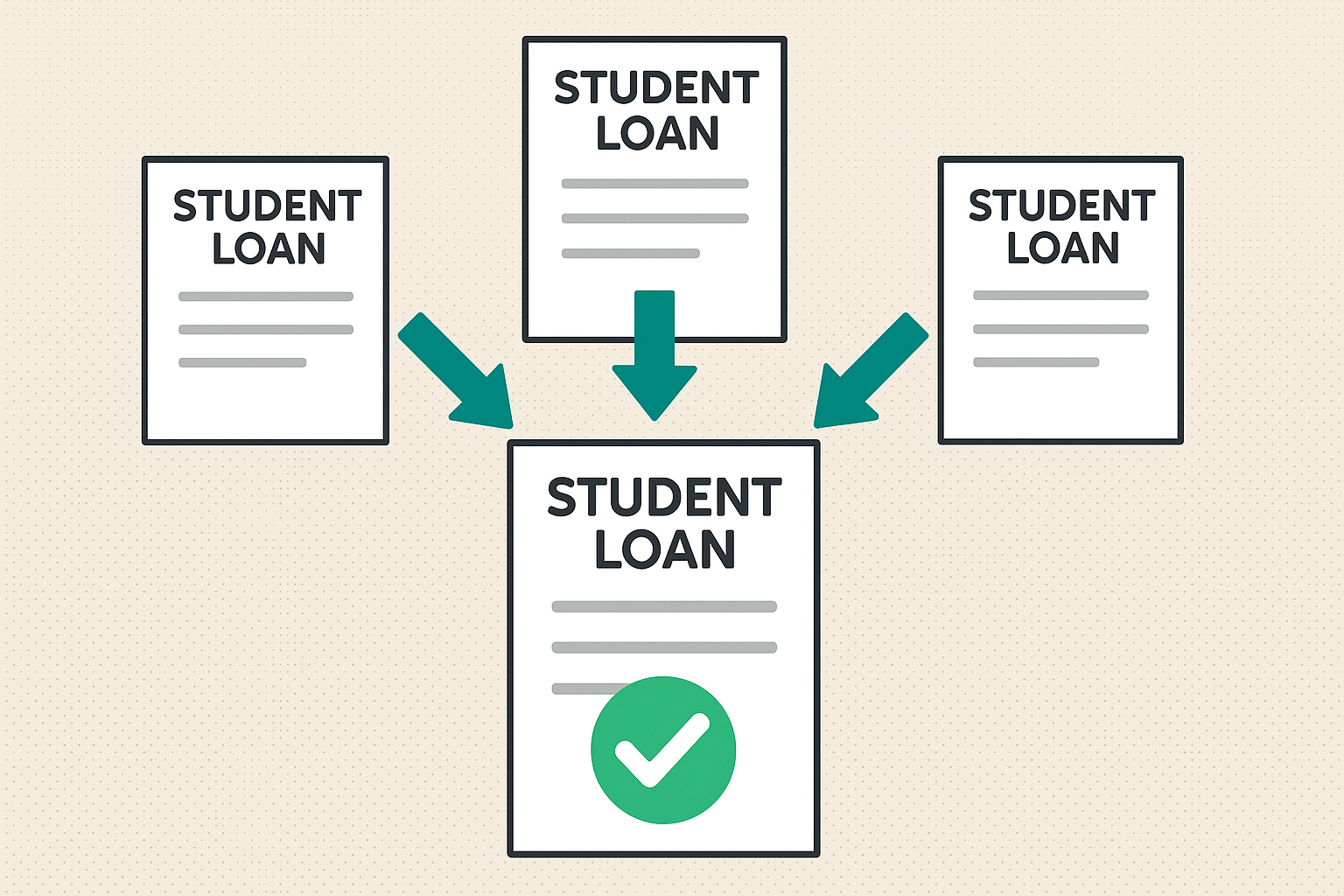
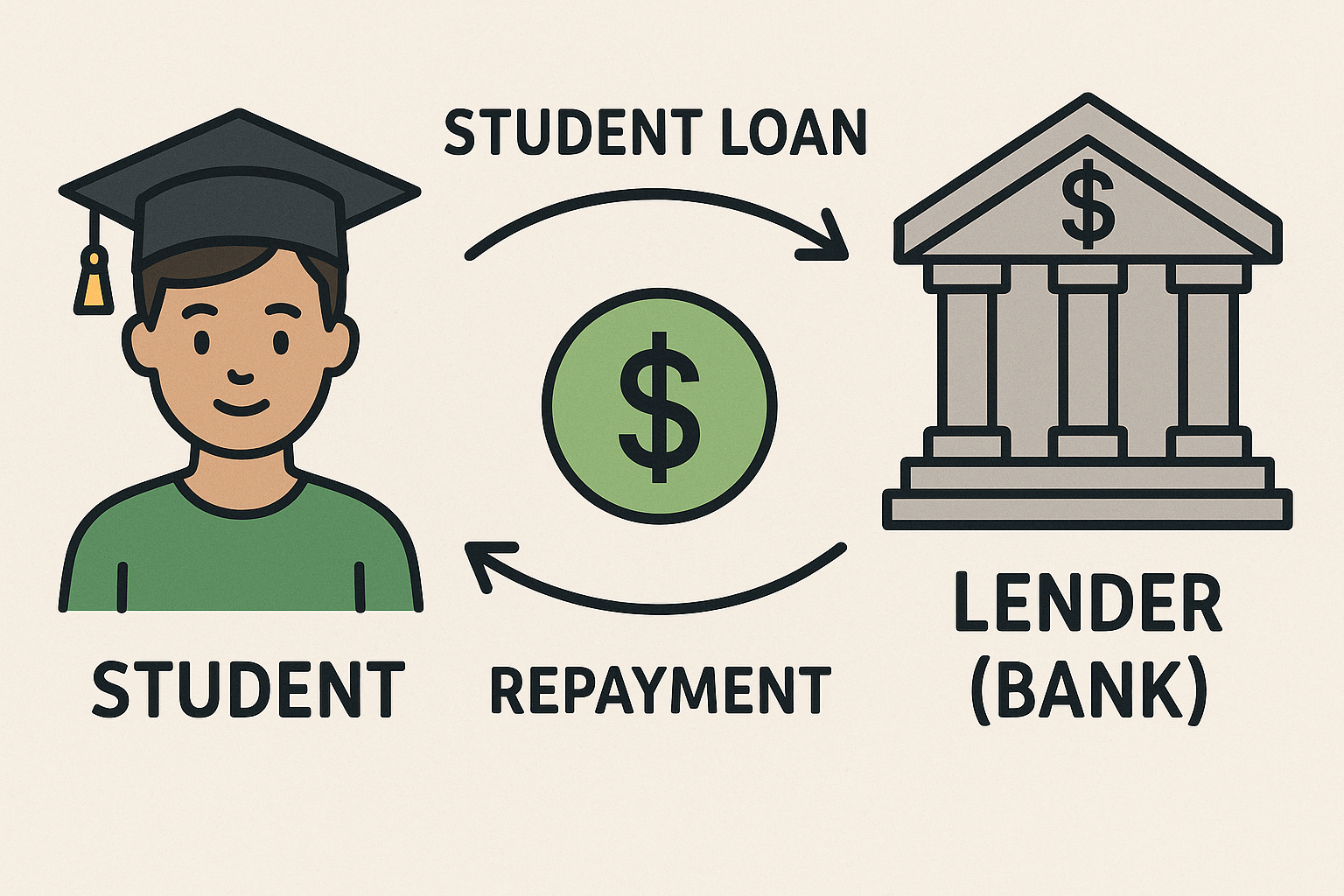
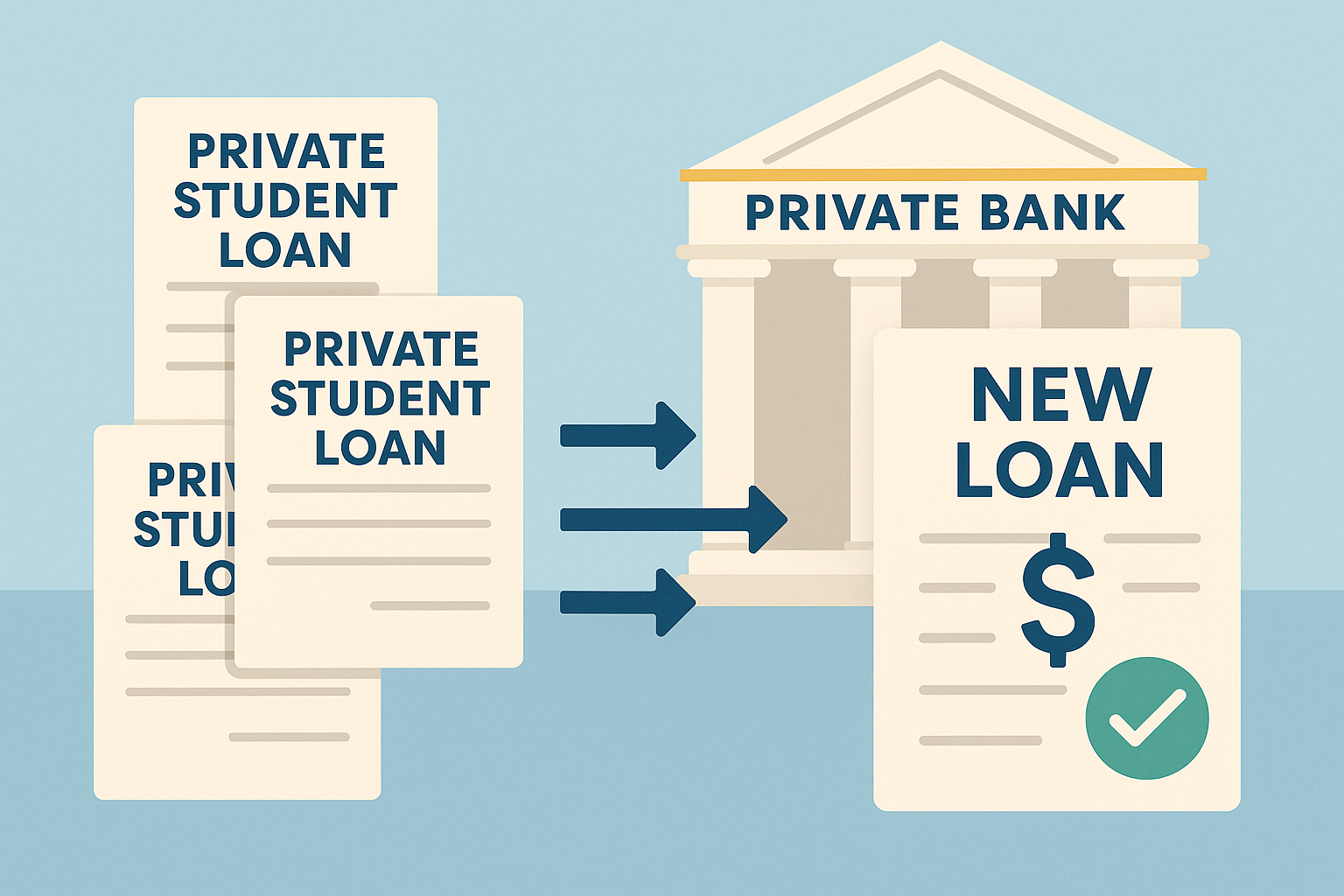
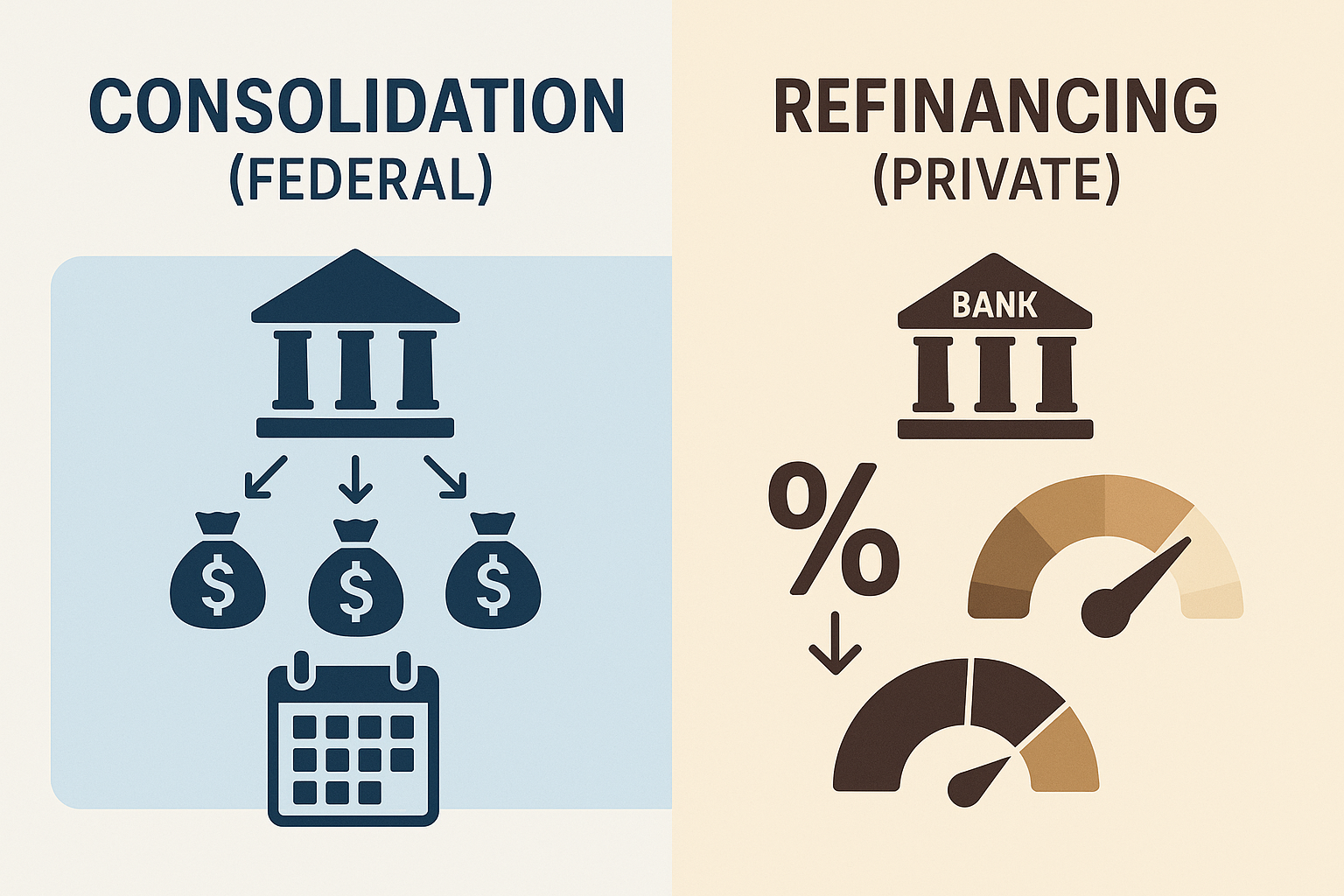
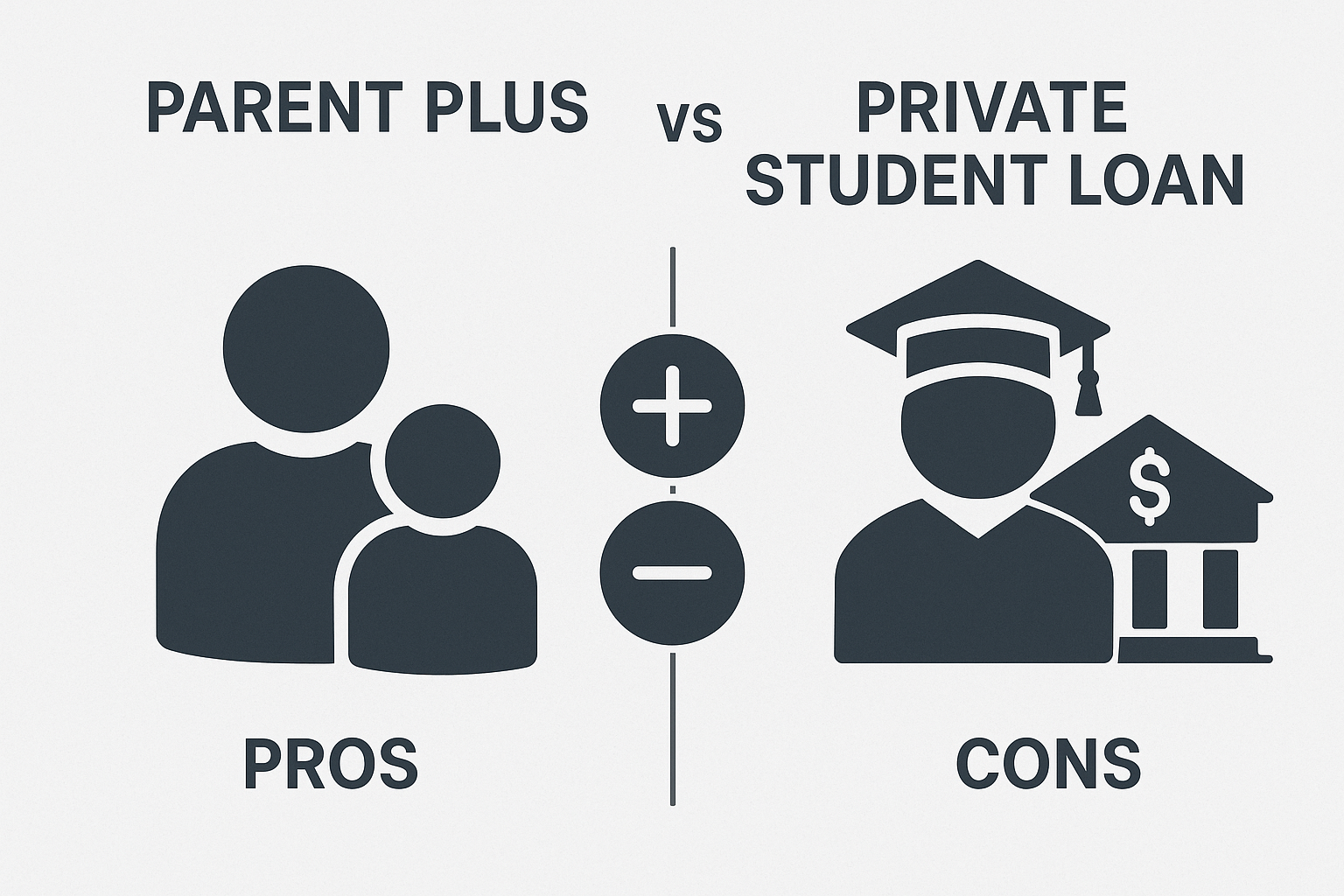
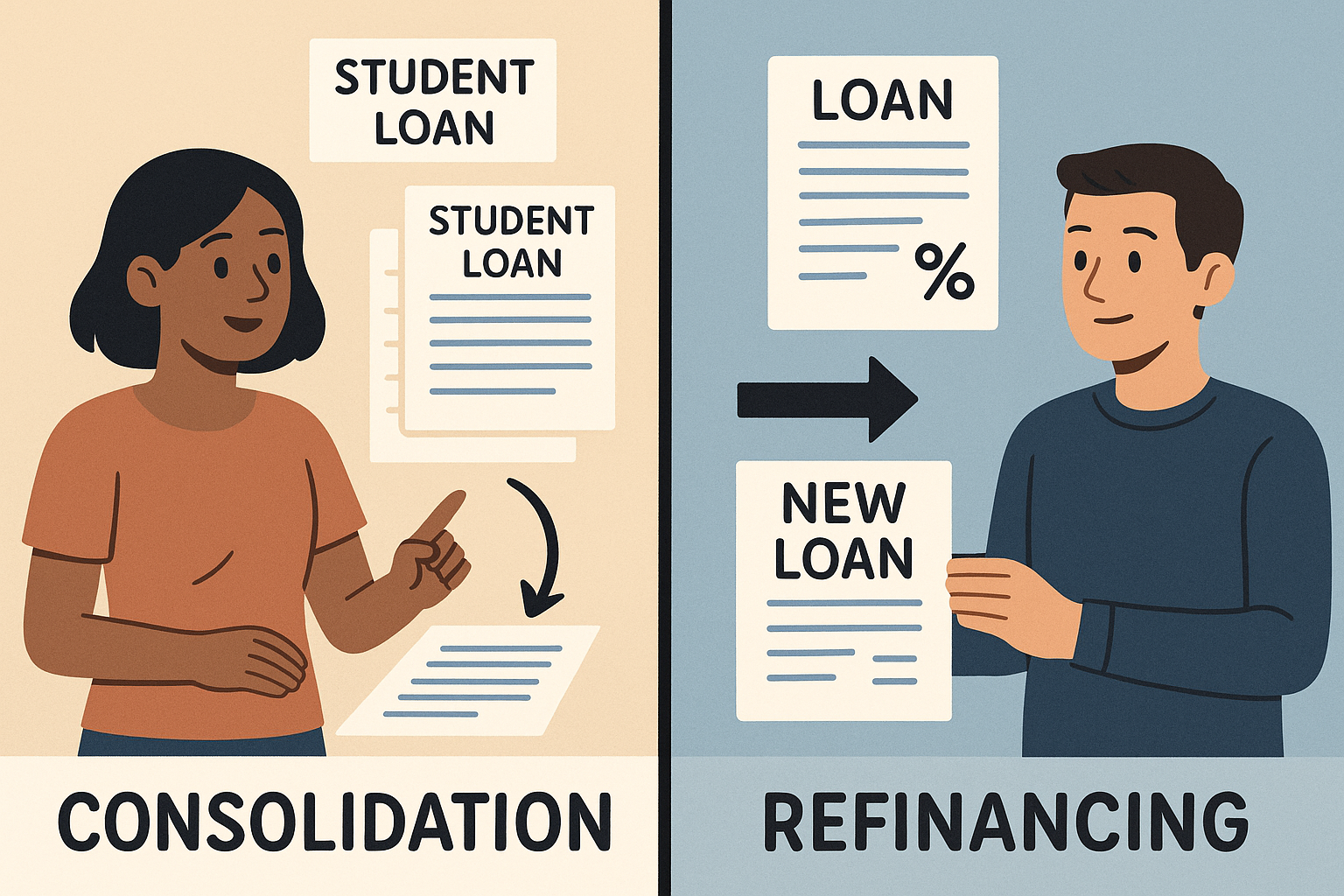
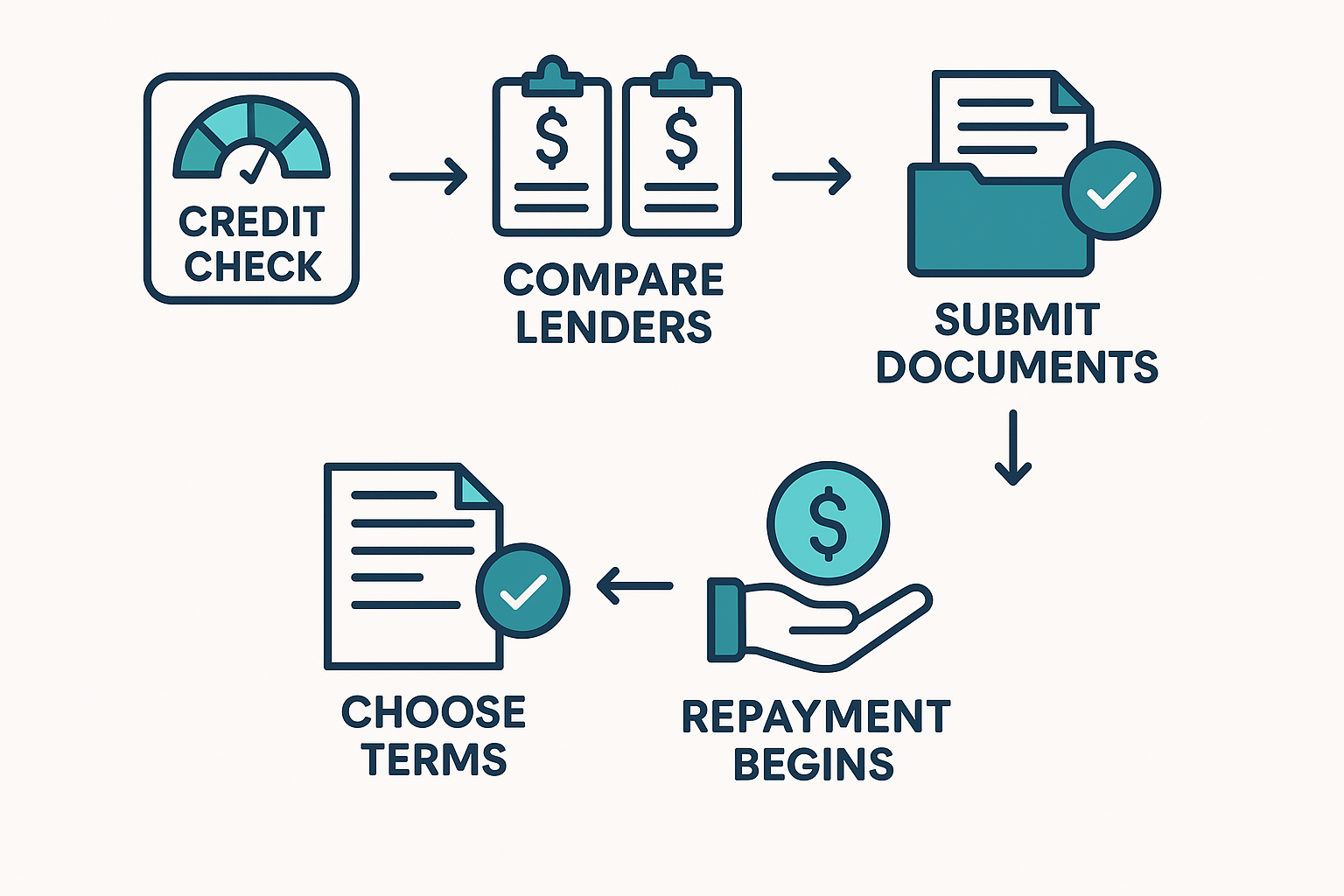
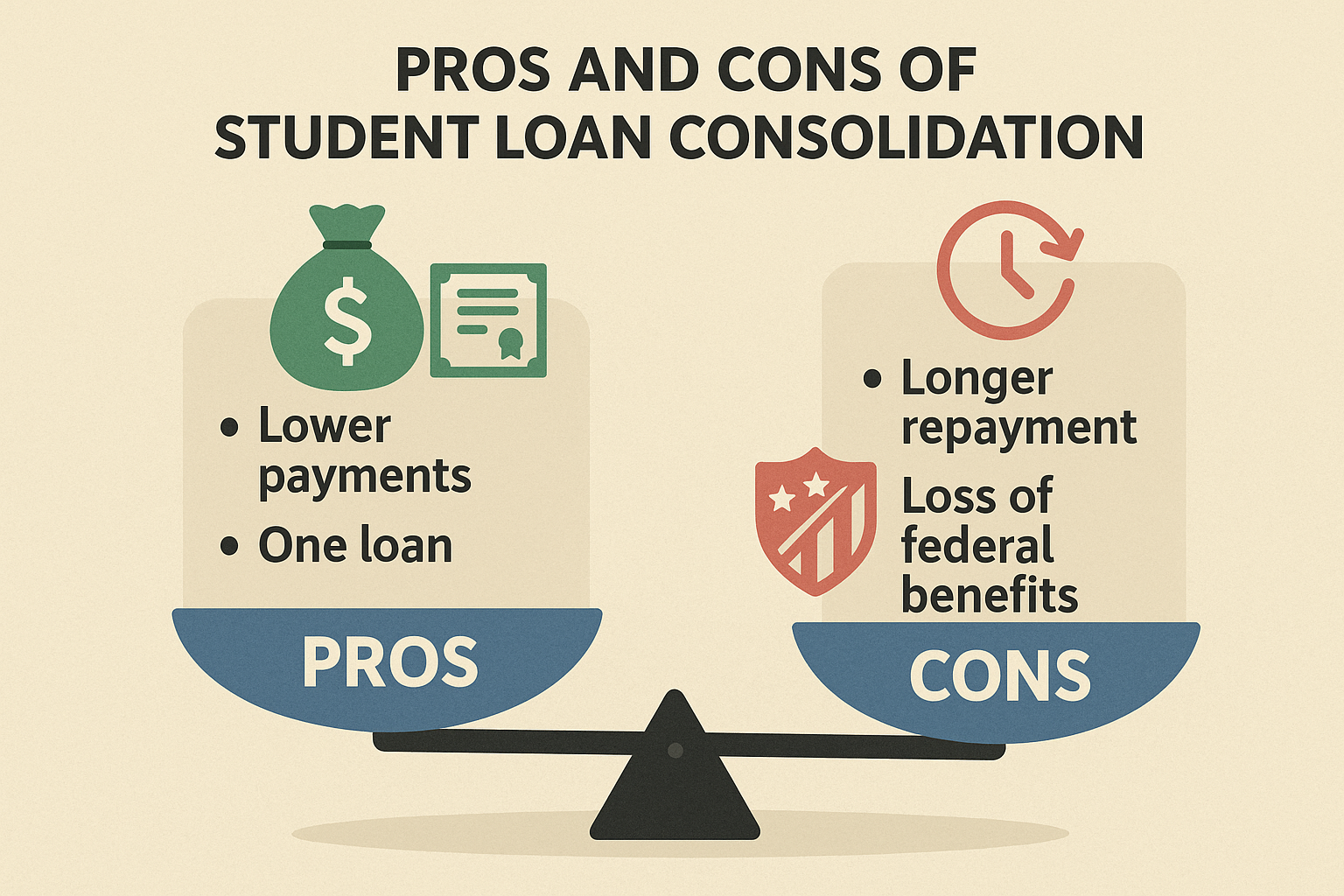




Pingback: No Credit Check Loans – Complete Guide for Borrowers - JobyNest